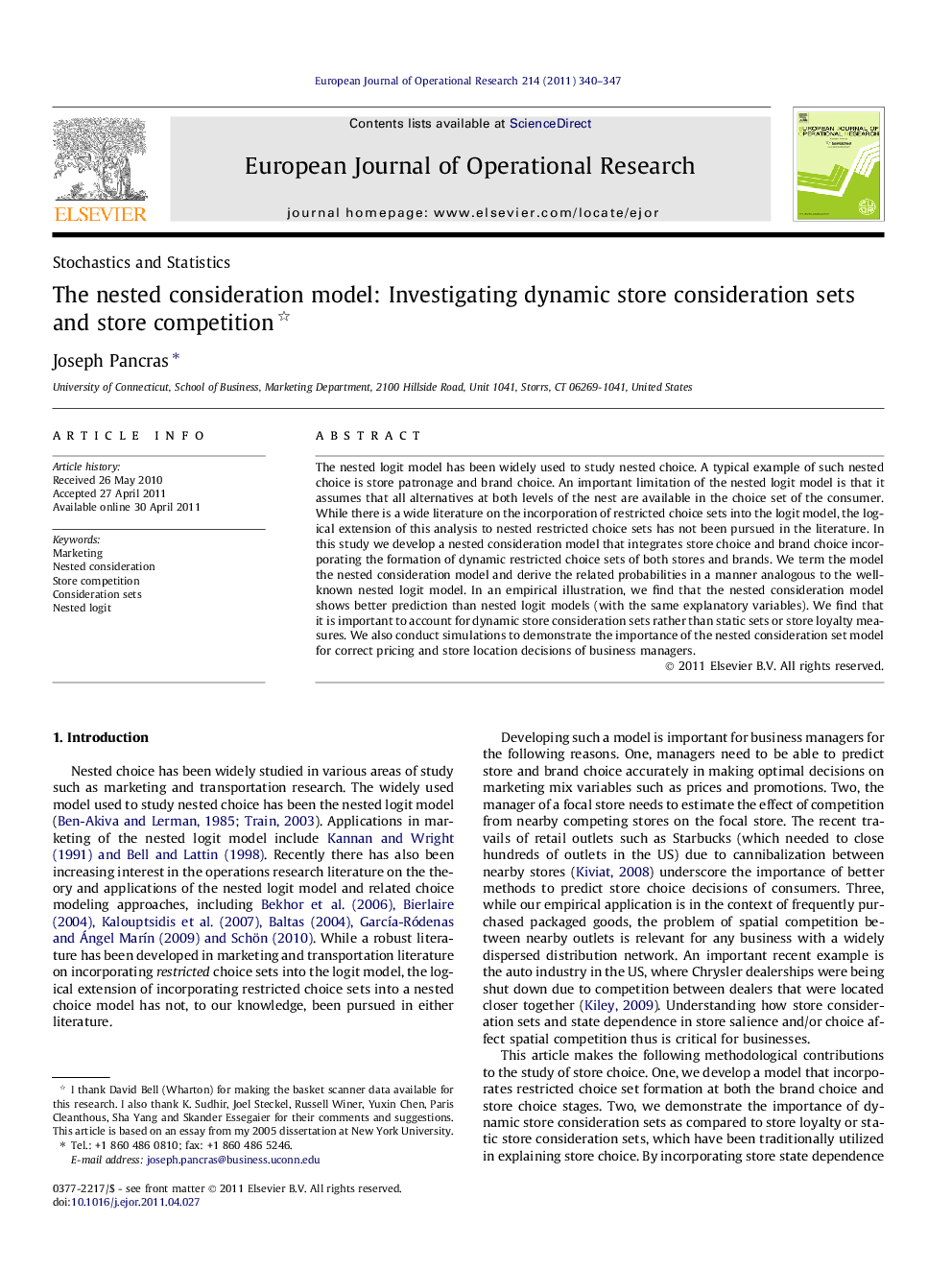| Article ID | Journal | Published Year | Pages | File Type |
|---|---|---|---|---|
| 476973 | European Journal of Operational Research | 2011 | 8 Pages |
The nested logit model has been widely used to study nested choice. A typical example of such nested choice is store patronage and brand choice. An important limitation of the nested logit model is that it assumes that all alternatives at both levels of the nest are available in the choice set of the consumer. While there is a wide literature on the incorporation of restricted choice sets into the logit model, the logical extension of this analysis to nested restricted choice sets has not been pursued in the literature. In this study we develop a nested consideration model that integrates store choice and brand choice incorporating the formation of dynamic restricted choice sets of both stores and brands. We term the model the nested consideration model and derive the related probabilities in a manner analogous to the well-known nested logit model. In an empirical illustration, we find that the nested consideration model shows better prediction than nested logit models (with the same explanatory variables). We find that it is important to account for dynamic store consideration sets rather than static sets or store loyalty measures. We also conduct simulations to demonstrate the importance of the nested consideration set model for correct pricing and store location decisions of business managers.
► Nested consideration model incorporates dynamic restricted choice sets of both stores and brands. ► Related store-brand choice probabilities derived analogous to the nested logit model. ► Dynamic store consideration predicts store choice better than static store consideration or store loyalty measures. ► Pricing and store location simulations show how nested consideration helps make better pricing and location decisions than the nested logit model.
